#powered by altered carbon
Explore tagged Tumblr posts
Text

Meditation by Yoong Bae
#star trek#star wars#merlin#atlantis#noragami#altered carbon#over the garden wall#the power#our flag means death#raised by wolves#the last of us#killing eve#the bear#arcane#miracle workers#black mirror#love death + robots#marco polo#the midnight gospel#blue eye samurai#voltron#intergalactic#natsume yuujinchou#steven universe#my memes#alien worlds#gen v#avatar#interview with the vampire#my stuff
6K notes
·
View notes
Text
youtube
#fanvidfeed#crossover#Aditi Rao Hydari#Joel Kinnaman#Power#Altered Carbon#The Girl On The Train#Youtube
0 notes
Text
"In the Canary Islands, in Barcelona, and in Chile, a unique fog catcher design is sustaining dry forests with water without emissions, or even infrastructure.
Replicating how pine needles catch water, the structure need only be brought on-site and set up, without roads, powerlines, or irrigation channels.
Fog catching is an ancient practice—renamed “cloud milking” by an EU-funded ecology project on the Canary Islands known as LIFE Nieblas (nieblas means fog).
“In recent years, the Canaries have undergone a severe process of desertification and we’ve lost a lot of forest through agriculture. And then in 2007 and 2009, as a result of climate change, there were major fires in forested areas that are normally wet,” said Gustavo Viera, the technical director of the publicly-funded project in the Canaries.
The Canaries routinely experience blankets of fog that cloak the islands’ slopes and forests, but strong winds made fog-catching nets an unfeasible solution. In regions such as the Atacama Desert in Chile or the Atlas Mountains of North Africa, erecting nets that capture moisture particles out of passing currents of fog is a traditional practice.
LIFE Nieblas needed a solution that could resist powerful winds, and to that end designed wind chime-like rows of artificial pine needles, which are also great at plucking moisture from the air. However, unlike nets or palms, they efficiently let the wind pass through them.
The water is discharged without any electricity. There are no irrigation channels, and no machinery is needed to transport the structures. The natural course of streams and creeks need not be altered, nor is there a need to drill down to create wells. The solution is completely carbon-free.
WATER IN THE DESERTS:
China Announces Completion of a 1,800-Mile Green Belt Around the World’s Most-Hostile Desert
Billions of People Could Benefit from This Breakthrough in Desalination That Ensures Freshwater for the World
Scientists Perfecting New Way to Turn Desert Air into Water at Much Higher Yields
Sahara Desert Is Turning Green Amid Unusual Rains in Parts of North Africa
Indian Engineers Tackle Water Shortages with Star Wars Tech in Kerala
In the ravine of Andén in Gran Canaria, a 35.8-hectare (96 acres) mixture of native laurel trees irrigated by the fog catchers enjoys a survival rate of 86%, double the figure of traditional reforestation.
“The Canaries are the perfect laboratory to develop these techniques,” said Vicenç Carabassa, the project’s head scientist, who works for the Center for Ecological Research and Forestry Applications at the University of Barcelona. “But there are other areas where the conditions are optimal and where there is a tradition of water capture from fog, such as Chile and Morocco.”
In Chile’s Coquimbo province, the town of Chungungo is collecting around 250 gallons a day from a combination of locally-made fog catchers and LIFE Nieblas’ pine needle design, the Guardian reports."
-via Good News Network, December 30, 2024
788 notes
·
View notes
Text
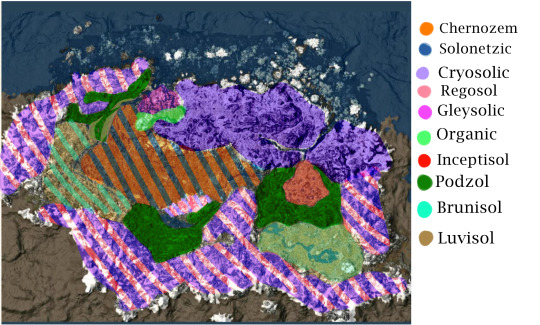
Long awaited, here is the soil map of Skyrim using the Canadian System of Soil classification. Brief description of my conclusions under the cut:
Chernozem: Whiterun Hold is likely home to the majority of Skyrim’s Chernozems. The majority of biological carbon sequestering in grassland environments are below ground, within the root systems. Organic material- humus, builds up, causing the upper layers of the soil to take on a dark colour. Additionally, Solonetzic soils could be present, peppered throughout the hold if the parent material to the soil is salty enough.
Cryosols are formed in Skyrim’s far North and high alpine regions. The mean annual soil temperature being 0 degrees C, with permafrost conditions. Freeze-thaw cycles lead to permafrost at the soils surface, but also cryoturbation: soil movement arising from frost action.
Additionally in mountainous regions, you would find Regosols. Soils which develop on unstable landforms and have had little time to develop, such as mountain slopes, or river floodplains.
Gleysols occur across the landscape of Skyrim, but primarily in Hjaalmarch. Gleysols are commonly found in depressions or low-lying areas where water saturates the soil continuously, leading to a molted characteristic to the soil.
Organic soils would primarily be found in the water saturated soils of Hjaalmarch. These are wetland soils found in forested areas and are commonly known as peat, muck, bogs or fens.
Borrowing from the USDA soil taxonomy, Inceptisols are light colored soils with moderate alteration, occurring under cool and cold climates. These soils would be found in the Eastmarch caldera.
Luvisols are associated with forested landscapes overlying loamy glacial till, or on clayey lacustrine deposits. Lake Honrich dominates a large portion of the Rift, according to UESP, seemingly draining from the lake. I believe this to be the site of a melted glacier, the lake being meltwater. Clay sediments are associated with lakes because of their deposition, coarser sediments bordering the lake near the shore, and finer particles at the deepest reaches. Additionally, at the end of the Karth river, where sandy deposits would be deposited at Solitude, before the stream looses power further down the river, leaving only clay to be deposited.
Podzols are associated with igneous parent materials, coniferous vegetation and high acidity. Primarily they are found in Falkreath Hold and Southern Eastmarch.
Brunisols are an intermediate stage between Regosols (undeveloped soils), and Podzol or Luvisols. I believe with the unstable, mountainous landscape of the Reach, soils would remain still rather undeveloped. Brunisols would also be interspersed among the Luvisols.
3K notes
·
View notes
Text
Aizawa and Class 1A x Student Alchemist Reader

In this, the reader has the same tattoos as scar. The reader’s left arm deconstructs molecules and their right arm reconstructs molecules.
The reader is quirkless so they use Alchemy to even the odds and are good at combat.
The reader took the entrance exam and has similar grade to Momo. Momo and the Reader share the 1/20 place amongst their peers
The reader aced the written test and destroyed the robots by using their alchemy to disassemble them. They got 45 villain points and 45 rescue points
When the teachers were looking over the students papers, Aizawa and Nedzu were amazed and skeptical of the reader being quirkless
Aizawa didn’t believe that you were quirkless so he used his quirk on you during his quirk apprehension test. Obviously it failed and he realized your were being honest on your paperwork. Still grilled you about it
Aizawa is ever so slightly more protective and stricter on you than other students. He worries all the time so he is a little harsher on you but you know that he just wants to push you a little more
You’re currently studying both flame and medical alchemy. You tend to study with recovery girl and help her out whenever you get the chance
During All Might’s hero vs villain training you were paired with Momo (Mineta didn’t get into the hero course) against Jirou and Kaminari. You won by creating a sleeping gas and put them to sleep whilst you and Momo wore gas masks she made
Bakugou refuses to admit your strength but has a secret respect for you since you beat him by altering his sweat’s molecules so it wasn’t explosive
Izuku has so many notes on you and has asked to draw your tattoos and you even began to teach him basic alchemy, although he sucks at it
When questioning you, you told Izuku that you were quirkless which he accidentally let it slip to his friends who then let the class know
After that you explained to the class that alchemy can be performed by anyone, it just take years of study and practice to perform and understand the basic rules and applications
Some didn’t believe you so you removed your shoe to show them all your second joint in your pinky toe as proof
Some still have a hard time believing it but most of the class accepted it
Kirishima, Sero, Iida, Jirou and Uraraka think you’re (manly) incredible and ambitious for dedicating yourself to something and making yourself strong despite the odds
Ashido, Kaminari and Hagakure still don’t believe that you’re quirkless
Tokoyami and Shoji both admire your strength and perseverance in trying to become a hero despite lacking a power and having been ridiculed and criticized for your dreams
Ojiro and you train in martial arts often as a means to strengthen one another
Tsuyu and you get along just fine as you both are some of the more mature students in classs
You tend to hang out with the quiet kids like Shoji, Tokoyami and Koda
You and Momo both bond over and help each other study the molecular make up of certain items
During the USJ attack, you used your flame alchemy on the Nomu. You used your conductive gloves to create the flames and tried to roast the Nomu
You took Hatsume’s place on Midoriya’s team in the Calvary battle
You fought Iida in the first rounds and won by creating a rugged and difficult terrain to run in as a means to slow him down, then you used your alchemy to seal his engines and managed to hit him in a pressure point that immobilized him
Todoroki was amazed when you were able to beat him in the sports festival. You turned his ice into water and then changed the arrangement of the stage’s molecular structure to that of quicksand and used the ground to swallow him up, winning your match.
Bakugou was pissed off when you altered your body’s carbon to be on the outside creating a skin of diamond like armor that his explosions couldn’t beat
You got 1st place in the festival but All Might accidentally let it slip during the award ceremony that you were quirkless
You got the third most offers from pros for internships out of the class
You ended up going with Best Jeanist and had a rather good time compared to Bakugou
After the Internships were over, you had mastered your flame alchemy and used it against All Might in your practical exam
Bonus: Todoroki learned that you can’t use flame alchemy when it’s raining or if your wet and accidentally started the ‘useless when wet’ shtick.
Now Bakugou makes fun of you whenever you get your gloves wet and acts like you need protection and enjoys babying you.
#mha x reader#bnha x reader#aizawa x reader#aizawa shouta#aizawa sensei#dadzawa#dad might#all might x reader#platonic class 1a#class 1a x reader#mha#bnha#best jeanist
757 notes
·
View notes
Text
Wet Beast Wednesday: bone-eating worm
Happy (almost) Halloween from us at Wet Beast Wednesday. What better to celebrate the spooky holiday than with a spooky animal? These critters are so spooky they even scare skeletons. Sometimes called zombie worms or bone worms, bone-eating worms are scavengers that play an important role in deep seas. Try not to get too scared.

(Image: a cluster of bone-eating worms on a bone. Their plumes are visible, looking like red feathery structures emerging from a clump of brown sludge. End ID)
Bone-eating worms are members of the genus Osedax, with 26 species currently known. My favorite is Osedax mucofloris, which means "bone-eating snot flower". They are small tube worms, reaching between 2.5 and 7 cm (1 to 2.7 in) in length. The body is divided into three segments, the trunk, ovisac, and root. The trunk makes up the majority of the body and it topped by red plumes that act as gills. At the base of the trunk is the ovisac, where eggs are produced. Below that are the roots that bore through the bones the worms live on. This is done by secreting carbonic acid that is produced through anaerobic respiration. The roots also produce a mucus sheath whose purpose is not fully known. It may protect the body from the acid or may prevent the acid from dissolving the hole the worm lives in. As with other tubeworms, the worm generated a protective sheathe to live in. Normally, the plumes extend out of the sheathe to respirate, but when threatened, they will withdraw into the tube.

(Image: a bone worm removed from the bone. It is a long, translucent tube with reddish plumes on one and a lump of wavy roots on the other. End ID)
Bone-eating worms lack a mouth, anus, and digestive system. To obtain nutrients, they exist in a symbiotic relationship with bacteria. As the worms break down the bone, they release lipids and proteins that the bacteria consume to produce energy in the form of glycogen, which is transferred to the worm. The worm then uses the glycogen to power itself and feeds it to the bacteria to keep them alive. The worms also use collagen, which is the primary component of bone. Many of the symbiotic bacteria species need the collagen, which the worm provides by breaking down the bone. Curiously, many of the symbionts produce toxins that disrupt the membranes at the roots, leading to infection. The bacteria are also found surviving outside of symbiosis with the worms Because of this, it is debatable whether the relationship between the worm and its bacteria is mutualistic (both parties benefit) or commensal (one party benefits, the other neither benefits nor suffers).
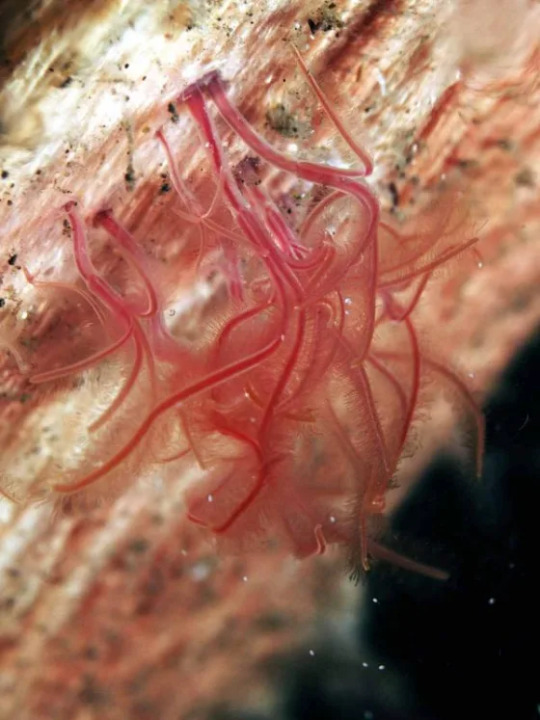
(Image: a cleared view of bone worm plumes emerging from a bone. End ID)
Bone-eating worms are found worldwide in oceanic depths ranging from 10 to 4,200 meters (30 to 14,000 ft). They are most commonly found on the skeletons of whales, but will also colonize fish bones and even, in one experiment, cow bones. Whale bones seem to be preferred both because of their large size and the large quantity of lipids found within. Whale skeletons can often be seen covered with bone worms, giving them the appearance of red shag carpeting. As the worms break down bones, other animals can take better advantage of the nutrients within. The presence of bone worms at a whale fall has been shown to increase the biodiversity of the site. Bone-eating worms are ecosystem engineers, organisms that significantly alter their habitat. They have been doing this since before whales existed. Fossil sea turtle and plesiosaur bones have been found with signs of bone worm colonization.

(Image: a lone bone worm with its tube visible. Its plumes are whitish. End ID)
The bone-eating worms have one of the most dramatic cases of sexual dimorphism in the animal kingdom. All the worms you see when you look at a whale skeleton are females. The males are 20,000 times smaller and fully microscopic. They still resemble larvae, making them a case of neoteny, an adaptation where juvenile characteristics are retained into adulthood. Harems of males live inside the females' tubes and feed on the nutrients released by the bacteria. As the female generates eggs, the males fertilize them. The eggs hatch inside the female's tube and stay for a while to mature before being released into the water. The fact that the worms are so widely distributed indicated that the larvae can travel vast distances to find a new set of bones, but the means they use to do so is unclear. The extreme sexual dimorphism reduces competition between males and females and ensures the males will always have an available mate to pass on their genes. The species Osedax pirapus do not follow this form of dimorphism. Males are still smaller than females, but they actually look like worms and share the same lifestyle. This increases competition between males and females, but ensures that males can make far more sperm due to their greater size.
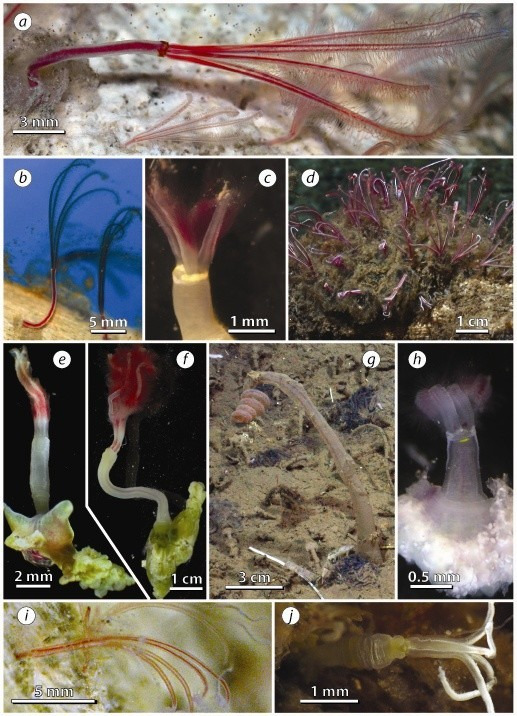
(Image: a collection of images of multiple species of bone-eating worms. Source. End ID)
#BONES FOR THE BONE WORM#wet beast wednesday#bone eating worm#bone worm#zombie worm#osedax#worm#tube worm#polychaete#wormblr#halloween#whale fall#invertebrates#invertiblr#marine biology#marine life#biology#ecology#zoology#animal facts#informative#educational#image described
231 notes
·
View notes
Text
moonlight melody ; takeshi kovacs x reader

summary: you don’t know how you got there, and you don’t even know if you can ever return home. and you can’t find it in you to hate it whatsoever.
warnings: isekai au; minor altered carbon explicit content, major fluff w/ lovesick & poetic takeshi!
a/n: the first of quirky reverie 2024! had this idea in the shower. yeah. haven’t shown this man any love in a while so please take it! hope you enjoy it & don’t forget to leave some sugar! ᐠ( ᐛ )ᐟ
» wanna know what I have in store this fall? come & check out this year's 'reve's quirky reverie' m.list! 🕷️'!

'But he couldn’t blame you. He needed you just as much as you needed him.' ;
A few drones flew overhead. The holographic half-naked model flashed across one of the many luxurious buildings. Even the little burn barrel that kept the slums warm in the far distance.
You’ve seen it all. You’ve seen it plenty. You’ve seen it almost every night.
And yet, you couldn’t help but marvel at the scene before you like you were seeing it for the first time.
The occasional brightness had you squinting your eyes, especially the ones resembling spotlights that shined in your face, but besides that, you were taking it all in like there was no tomorrow. Noise after noise, none of which was deafening given the aerial view of the balcony, just enough to wonder what sort of life, bad or good, existed beyond your very own.
As beautiful as it was to see the city or really, Altered Carbon on television, the visual effects on your screen didn’t do justice, now that you’ve gotten used to the real thing. Of course, the bright lights were just a façade from how dangerous Bay City truly was as soon as one stepped out of the hotel. But the life you lived, where the concept of Sleeves and the majorly advanced technology in the show never existed, before miraculously ending up here, wasn’t any better either.
Less deadly, no doubt, but much more… dull.
You didn’t jump when a pair of arms came to wrap around you, pressing their chest against your back before perching their forehead on your shoulder. You weren’t sure if you shivered from his deep voice or his warm breath tickling you.
His words were unintelligible, lips moving against your skin.
“Can’t hear you, handsome.” You chuckled. He raised his head, a few strands of hair draping over his eyes.
“Can’t sleep?” Takeshi asked once more. You still couldn’t believe this was the same man who survived for centuries, instilling fear in men blinded by temporal wealth, now almost grumbling at you for successfully sliding out of his arms.
“Not really,” You chuckled. He forced his bleary eyes open, not wanting to miss the little crinkles forming in your eyes. Takeshi instinctively leaned his face closer when you angled your head, kissing his cheek as an apology, “Didn’t wanna wake you up though. I can come back inside if you want.”
He’d love that, he’d want nothing more than to drag you back into bed. But your wide-eyed wonder was so irresistible that he’d feel like a criminal if he took it away from you. No matter how many times he had seen it.
“Nah. I don’t mind staying out here for a bit.” Instead of standing with you, he pulled you to the chair he had kindly dragged out for you months back. Sitting you on his lap, he practically melted in the seat, nosing the sensitive area between your neck and shoulder. He held you like the most precious plushie, and in all honesty, he was willing to fall asleep right then and there.
Truly, with the images—memories of you that flashed as his eyes remained closed, his mind in constant relaxation. As if life, whatever powerful being beyond anyone’s control or understanding had finally blessed him with the greatest form of honour, but he wasn’t the only one to believe as such.
You would always hold him like he was your lifeline, and if you were being honest, he was. Hoping day in and day out that you wouldn’t wake up somewhere you could no longer call home instead of the familiar room in The Raven. The day never came, and though Takeshi always knew how to ease your worries, the scare would linger from time to time.
But he couldn’t blame you. He needed you just as much as you needed him.
Even now, too enamoured by the look you had and how the lights cast onto your face, how your eyes took in everything you could like you wouldn’t be able to see again, and despite how tainted his world was, he found it endearing, only because it was you.
He quickly became accustomed to you with him—to you and him. The little hand caresses, the comforting kisses, the smiles that silently told him ‘It’s okay. You’ll be okay.’
We will be okay.

» a/n: something short and sweet for our beloved hunk because he deserves it whenever possible!! ;; gorgeous divider by @firefly-graphics ♡
#— reve's reverie 🌹#reve's quirky reverie 🕷#takeshi kovacs#takeshi kovacs x reader#takeshi kovacs x f!reader#takeshi kovacs x female reader#takeshi kovacs x you#takeshi kovacs fanfic#altered carbon#altered carbon fanfic#altered carbon x reader#joel kinnaman#joel kinnaman x reader
135 notes
·
View notes
Text
The United States solar energy boom is finally taking off - in the worst way. In the Mojave desert and other federal lands across the West, utility-scale installations are putting gigawatt-hours of energy on the board and powering millions of homes. But the designs are sloppy, the labor conditions are horrific, and the environmental damage is incalculable. Ancient joshua trees are being clear cut, endangered desert tortoises are being left for dead, the vast biotic carbon stores of Mojave soils are being upturned, and the reflectivity of enormous expanses of desert are being altered, affecting the planetary climate. But it doesn't have to be this way. There's a type of energy that requires no fuel and no land. It hardly even needs transmission lines, as it can be built at the site of use: rooftop solar. Every hour of the day, rooftops across the United States soak up enough sun to generate petawatts of power. Estimates for their potential to offset US energy demand range from 13 percent to over 100. Yet at present, only around 2 percent of US energy is generated by rooftop. And then there's land area that's already been developed. Just by building solar on degraded lands, focusing on superfund sites, reservoirs, and farmland, researchers estimate we could generate more than enough to offset today's national energy demand. While there are points of dispute concerning some projections, the conclusion is clear: between the potential of degraded lands, rooftops, wind, and storage - plus existing hydro, nuclear, and other zero carbon energy sources, there's really no need to tear up the rare and fragile ecosystems of our deserts.
1K notes
·
View notes
Note
Woaaah I'm so glad the you write for mashe. I don't know if ur open for request if not please ignore this
How about Rayne having to bring his twin sons to work cuz his wife is out for business then for some reason Mash and his gang came to the Divine visionary and typical mashle shenanigans ensues.
The catch tho is that the one twin son is like a carbon copy of Rayne and the other is the same but hair color is like in opposite sides.
If ur uncomfortable with this please ignore this. But I hope you have a great day!!!
★ little raynes and mashle shenanigans
notes. little raynes omg (im his wife like literally) also this is the last request before i start on a new project 🫡

one rayne, two raynes, three raynes. and another rayne if you're counting finn to look similar to rayne. one twin looks exactly like his father, with half yellow and half black hair split in the center. his lines the same as rayne, both streaks that runs down his eyes. demeanor like his father's— serious, calm, and collected.
what about the other twin? he is exactly the same like his father. well, not really. he has the colour of your hair and a different type of line design. this twin is on the weaker side, seeing how he only has a single line that runs across his nose. just like you, with a single line. being the weaker twin, he was softer than his elder twin brother, often helping around town or anyone at all.
today rayne is all alone with his sons, as his wife had to visit her family's business to help around, so she left the boys with him. rayne is a busy divine visionary, he couldn't just leave his sons alone. so he brought them to his office. what a surprise, his brother's friends are all there. and rayne's eyes twitched at the chaos that is about to happen.
finn is the first one who greets them, for he is their uncle. being the loving and nice uncle finn is, he often spoils them and doesn't know when to stop. like always, he gave both the twins a candy each, ruffling with their head.
mash who has never seen rayne's children before, is fascinated by the fact that there are two other little raynes. one the exact copy, the other immediately reminding him of you. he doesn't know whether to continue feeling fascinated or to feel fear since there is a mini rayne in town now. what if mini rayne is as powerful as his dad?
lance who had no reaction to them at all. he already saw them, already met them, and already knew them long ago. in fact, the older twin quite likes lance. he sees lance as an icy and cool idol to admire.
dot who keeps the kids if they want tips on how to get a girlfriend and only the younger ames listens, for the elder one immediately finds dot annoying. the younger one is just curious on what the meaning of 'girlfriend' is, before lemon pushes dot away and apologised to the younger ames.
lemon who tells the twins not to mind dot, for he still hasn't find a girlfriend after years of being single. she tells them not to worry as they are still young and instead, gives them the cream puffs she has made for mash which ended up being way too much.
and rayne, who sighs and shakes his head at the growing trouble that he could smell from afar. seeing the piles of paper stacked on his table, he has no choice but to ask the help of the mashle friends to look after his kids. he could trust finn, but he doesn't trust the others. so he purposely gave the task to finn, but everyone else took it as an invitation to babysit two little raynes.
rayne will make sure to complain to his wife when she comes back home.

© SENEON 2024 ♰ do not repost, alter, or translate.
#﹙🗝️ .𖥔 ݁ ˖ 𝐰𝐫𝖎𝐭𝖎𝐧𝐠﹚#rayne ames#rayne x reader#rayne x y/n#rayne x you#mashle#mashle x reader#mashle imagines#mashle headcanons#mashle fluff
330 notes
·
View notes
Text

1968 Wood, Hot Metal, and Gasoline: The Improbable Marcos 1600 GT
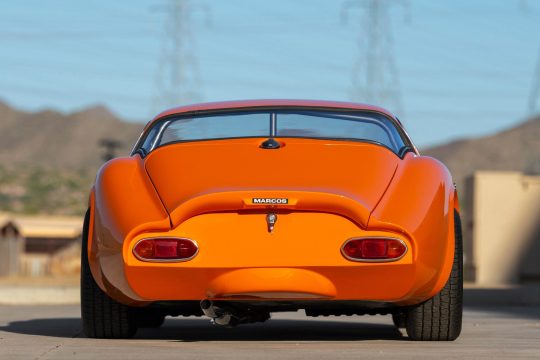
1968 Wood, Hot Metal, and Gasoline: The Improbable Marcos 1600 GT

1968 Wood, Hot Metal, and Gasoline: The Improbable Marcos 1600 GT
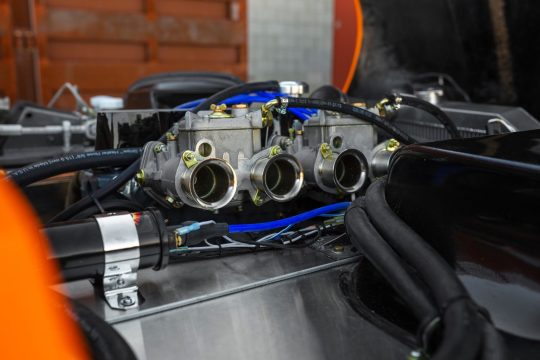
1968 Wood, Hot Metal, and Gasoline: The Improbable Marcos 1600 GT
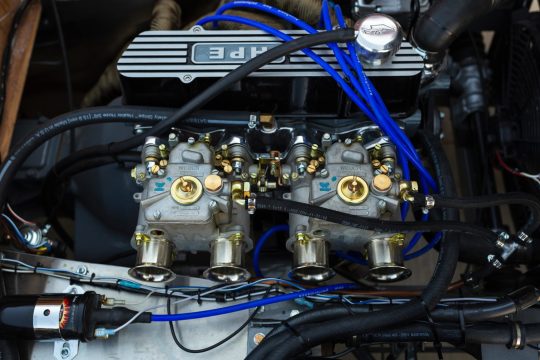
1968 Wood, Hot Metal, and Gasoline: The Improbable Marcos 1600 GT
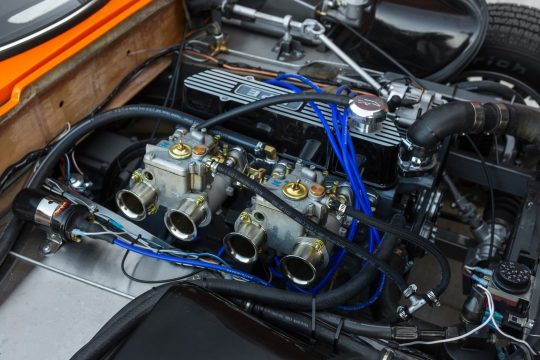
1968 Wood, Hot Metal, and Gasoline: The Improbable Marcos 1600 GT
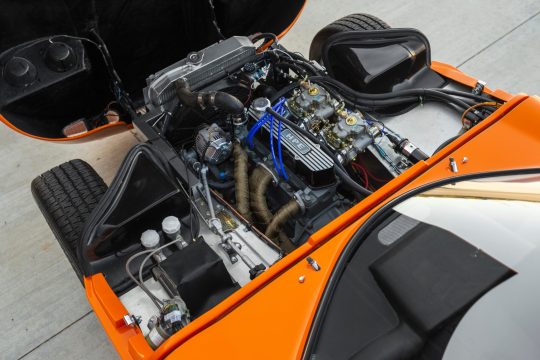
1968 Wood, Hot Metal, and Gasoline: The Improbable Marcos 1600 GT
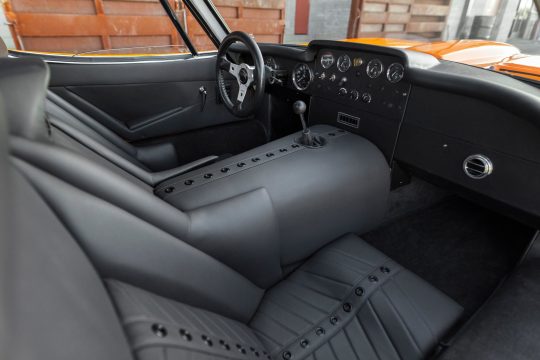
1968 Wood, Hot Metal, and Gasoline: The Improbable Marcos 1600 GT


1968 Wood, Hot Metal, and Gasoline: The Improbable Marcos 1600 GT

1968 Wood, Hot Metal, and Gasoline: The Improbable Marcos 1600 GT

1968 Wood, Hot Metal, and Gasoline: The Improbable Marcos 1600 GT
It’s easy to deride the Marcos, but its “plywood” is more akin to a state-of-the-art composite technology. Wood in cars? The mind goes to the faux wood paneling on
the left tasteful Chrisler production of the early 1990s, or the anachronistic Morgan Roadsters. But the Marcos 1600 GT is much different than either of those applications. And it owes a lot to one of the greatest warplanes of all time: The de Haviland Mosquito, which relied heavily on plywood construction.
Yes, plywood. We think of it as a cheap material, maybe even an inferior one, and certainly not something that has any place in a sports car. But use it correctly, and plywood's limited weight and incredible strength do wonders. Think of it as a composite material: You can alter the aspects that make up its structure to change its characteristics—the wood type, the number of plies, the orientation—just like you can with fiberglass or carbon fiber, which can be made of different weaves or molded using different techniques. And like those materials, it's impressively strong for its weight (especially at the time of the Mosquito and Marcos).
You won't be surprised at all to learn that the aerodynamicist and co-founder of Marcos, Frank Costin, worked as an engineer on the Mosquito as a during the war.
The brand is the first king, the Xilon (Greek for "wood") used plywood chassis construction (the car was remarkably ugly, too), and the GT was a further development of these techniques. The body is constructed of fiberglass and supported by the wooden chassis, which gives the car a rigid structure that's lightweight—it's about 1,800 lbs—and strong. Consider the issues that Colin Chapman had with the very advanced Lotus Elite, an all-fiberglass monocoque road
car that suffered from some notable failures. The hybrid construction of the Marcos, on the other hand, proved remarkably durable.
And to be very clear about the comparison to the Morgan roadster, the Marcos GT's chassis is plywood, whereas the Morgan has a steel chassis and an ash-framed body. Later Marcos GTs, however, used a steel chassis that had some issues. Notably rust. As such, steel-chassis Marcos are far less desirable among fans of these little sports cars.
This particular car, powered by a Ford Kent crossflow inline-four that's been bored to 1.7 liters. Power is sent to the rear wheels via a four-speed manual transmission and a 3.73:1 differential.
Sources: motortrend.com ; classic.com ; wikipedia.org ; autoevolution.com
69 notes
·
View notes
Text
little mark and cg nolan headcanons !!






— requested by anon —
— cw mentions of abuse, apologetic nolan, and some vague spoilers for s3 —
✩₊˚.⋆☾⋆⁺₊✧ ✩₊˚.⋆☾⋆⁺₊✧ ✩₊˚.⋆☾⋆⁺₊✧ ✩₊˚.⋆☾⋆⁺₊✧ ✩₊˚.⋆☾⋆⁺₊✧
🎈 - nolan would probably find out about mark’s regression super late and it wouldnt be because anyone told him. it would’ve been something he learned because mark had a meltdown and regressed while debbie was away, making nolan the only one around. he doesn’t know what’s happening, obviously, but mark is crying and he looks so, so scared. when he was little, mark found comfort in his father, knowing that he’d always protect him. now, that isn’t really the case and it takes nolan over an hour to coax him out of the corner mark stuffed himself in.
💥 - nolan, despite his actions, does love mark and is very well meaning when he returns to earth. early on, however, he just couldn’t wrap his head around mark’s regression. it was yet another human thing that made them weak, that he simply could not understand. but, for him, his children grow up so quickly. he blinked and mark was a man, ready to set off on his own. sitting with mark, quietly playing with him while he’s regressed, feels like it’s slowing down time a little. realizing this is what really proved to himself that he’s changed and it only served to motivate him more to reconnect with his son.
🎈 - mark is actually really scared of his father when regressed. he’s scared of most men, really, besides william and cecil (on good days). but being the subject of his trauma and the reason why mark regresses, nolan is often the focal point of his nightmares and even just seeing him on a day where mark is feeling slightly vulnerable will cause him to involuntarily regress. it takes so long for him to even be willing to stand in the same room as nolan without sobbing to debbie. every single time, nolan sat on the floor and waited— just waited. he never expected mark to forgive him. he didn’t even expect the planet to accept him back (they haven’t, really, but he’ll take his wins where he can get them). so he just sits there and tries to make himself as open as a viltrumite possibly could.
💥 - mark is almost a carbon copy of his child self when he regresses and it fills both of his parents with such nostalgia. he’s excitable, he rambles non-stop about comic books and movies, and he loves sharing things with his mother. he gives her little gifts, tells her all about the trip he goes on with william and amber, and makes sure she’s involved in his bubble of childhood. since nolan returned, this is still true but it’s altered. he still ends up helping debbie more, even though he knows little boys don’t belong in the kitchen (he’s accidentally broken too many things using his powers while regressed), but he’ll sometimes offer to help nolan too with whatever home project the man has busied himself with (since he can’t be a hero anymore). mark still tells them both everything, but he’s a lot more reserved around his dad. debbie encourages him a lot and, with nolan genuinely trying, mark slowly lets him in.
🎈 - nolan’s favorite thing to do is watch little mark play with oliver. oliver doesn’t really understand but he loves mark and accepts him as he is, weirdness and all. he also really thrives as an older brother, happy to be able to take care of his family for once. nolan isn’t used to feeling such strong emotions, but nothing brings it out of him more like seeing his boys bickering back and forth over a hot wheelz. this is when mark feels most at ease around nolan too. there’s something that just feels different when mark has his brother with him, and it’s kind of nice being able to sit beside his father and pretend like everything is normal.
💥 - nolan was always mark’s favorite to hug, even as a kid. he’s so big and strong! before his powers, it was just fun to squeeze his dad and have him pretend like mark was stronger than he was, but now he actually is strong enough that only nolan can handle him. it’s the thing that bonds them the most when mark regresses. he loves being held and he loves being picked up— it makes him feel so small and safe. the real proof that their relationship had improved came when mark started to toddle up to his dad, clearly small, and curled next to him— silently asking for cuddles. it became the new norm for them. nolan was the one he went to if he wanted uppies, or really tight hugs to regulate himself, and while debbie was still he go-to for everything else, nolan took this advancement as a badge of pride and did everything he could to be the perfect cuddler.
#my post#my headcanons#agere#invincible#invincible agere#agere headcanons#age regression#agere community#fictional agere#fandom agere#mark grayson#nolan grayson
24 notes
·
View notes
Text
HOTD AU Concepts Masterlist part 1
Main series: HOTD AU Masterlist

Reader demanding Criston is punished Reference: Part 2
Possible love interest? Will Daemon be a love interest
Connection between Aemond and Luke Reference: Part 3
Why Aemond snitched Reference: Part 5
How Alicent contributed to Aemond’s tendencies Reference: Part 5
Reader’s title in court Y/N’s Aliases
When reader has a breakdown
Helaena’s nickname
If reader went with Rhaenys Reference: Part 5
----> Reader crowning Rhaenyra
If reader has a child with someone else
Naming after them some chs ;
Naming the child 'Y/n' Naming her Aemma Carbon copy
Fighting over the name If Aemond was the father

How reader is carried through history
Paintings commissioned Portraits inspirations for the reader
Interpretations of ‘love triangle’ Aegon IV w/reader Other nicknames
Old!reader like Olenna Reader dying before blackfyre rebellion
Criston react to Y/N being insulted
What if reader’s biological family wants her back
----> What if it is a powerful kingdom
Reader being a Gremlin
Liking shiny & cool things Bringing a snake Likes to take their things
In a dragon onesie Getting sick from biting ankles Finding secret passages
Does Aemond see Rhaenyra’s kids as competition
Reader has diary
---> If it’s found during Daenerys time Aegon alters it
If reader ends in GOT timeline

Reader’s dress are mostly being stolen
----> Noticing Helaena’s embroideries
Does Helaena know of Aegon’s feelings?
Bisexual reader falling for Helaena
Reader getting Marie Antoinette syndrome
Y/N teaching the children to dance children having nightmare
Reader likes singing Luke secretly being the favorite
Reader losing an eye
Because of Luke and Jace
Reader requesting Aemond/Daemon a rare item (separate)
Young!reader bringing a pin to Otto
Does Viserys know of Aemond’s feelings
Alys in the story?
Reader telling them she's like Leanor
Drunk!reader being affectionate
Reader sprained her feet Reader suddenly falling ill
227 notes
·
View notes
Text
"The personal, as everyone’s so fucking fond of saying, is political. So if some idiot politician, some power player, tries to execute policies that harm you or those you care about, take it personally. Get angry. The Machinery of Justice will not serve you here – it is slow and cold, and it is theirs, hardware and soft-. Only the little people suffer at the hands of Justice; the creatures of power slide from under it with a wink and a grin. If you want justice, you will have to claw it from them. Make it personal. Do as much damage as you can. Get your message across. That way, you stand a better chance of being taken seriously next time. Of being considered dangerous. And make no mistake about this: being taken seriously, being considered dangerous marks the difference - the only difference in their eyes - between players and little people. Players they will make deals with. Little people they liquidate. And time and again they cream your liquidation, your displacement, your torture and brutal execution with the ultimate insult that it’s just business, it’s politics, it’s the way of the world, it’s a tough life and that it’s nothing personal. Well, fuck them. Make it personal." -Richard K Morgan, Altered Carbon
48 notes
·
View notes
Text
How Do F1 Cars Work?: Braking, Cooling, Sensors
I never know how to start these posts. Let's dive in.
Braking and Cooling
Brakes are an incredibly important part of any car, but most especially in F1. With the speed and power the cars have a sensitive, sturdy, and strong braking system must exist. In the case of modern cars, F1 uses an extremely efficient and durable carbon-carbon disc brake system. This allows the car to screech to a halt in a split-second, and allows drivers to use their speedy reaction times to the best of their ability. When the driver steps on the brake pedal, it compresses two master brake cylinders, one for the front wheels and one for the rear, which generate fluid pressure.
For the front tires, the fluid pressure is delivered directly to the front brake calipers (part that houses brake pads and pistons). Inside each caliper, six pistons clamp pads against the disc and it is this friction that slows the car down. For the rear tires it is a bit different.
At the rear, the car can brake by three separate sources: friction from the brakes, resistance from the spinning engine (engine braking) and electrical braking that results from harvesting energy from the MGU-K . Although the driver can adjust each of these on his steering wheel, when he presses the brake pedal, the three systems work together via the Brake By Wire (BBW) system.
When the driver presses the pedal, the fluid pressure generated in the rear braking circuit is picked up by an electronic pressure sensor. The signal from this sensor represents the overall rear braking demand from the driver and is passed to the Electronic Control Unit (ECU) where it is turned into a series of commands to brake the rear of the car. The ECU distributes its efforts to the three systems according to the the set up of the car and this is altered by the way that the driver has adjusted the switch settings on the steering wheel. This is what teams mean when they say changing the setting on the car.
Going hand-in-hand with braking, cooling is another important part of the car, especially for brakes. Basically, there is a series of systems that cools the power unit, brakes, and electronics. If the car overheats, it can lead to damage and lack of performance. There are a few ways to cool. Radiators cool the engine and hybrid system. Intercooler cools the air that the turbocharger compresses before it enters the engine. Brake cooling ducts bring air to the brakes in order to stop them from overheating.
2. Electronics and Sensors
So i'm sure many of you have looked at the steering wheel and been baffled that this thing that looks like a Nintendo Switch steers that car. The F1 steering wheel is incredibly complex and has a variety of buttons, screens, and knobs. For example, on the steering wheel is an area for strat settings, where their plans for all eventualities are mapped out. There is also a rotary knob for MGU-K settings, where drivers can switch around when faced with possible failures. The menu allows drivers control over every setting in the car. Beyond that there is the pit lane speed button, gear change buttons, race start button, energy recovery button, and brake balance knob, among others. It really tells you how much drivers do in a race beyond racing.

Other than the steering wheel, there is also the telemetry, over 300 sensors which gathers race data and sends it back to engineers on the pit wall. This way, engineers can either remotely alter settings and strat, or advise the driver on what to do. F1 uses a customized mesh wireless network system based on WiMax 802.16 at each racetrack. The sensors record data, which is then temporarily stored in the Electronic Control Unit (ECU), which controls functions like engine performance and power steering. That sensor data then travels wirelessly to a centralized location managed by F1. F1 then sends the data to the relevant team, of course very securely. Teams then use a system called Advanced Telemetry Linked Acquisition System (ATLAS) to view and analyze sensor data.
The final pretty important electronic devices on an F1 car is the many many cameras. The most recognizable camera is found in the "T" structure that sits atop of every F1 car. It gives viewers that top-down, forward facing view used often by broadcasters. this is also how viewers often distinguish between cars of the same team. One driver will have a yellow camera, the other has black. The two nose cameras provides a view of the front wing and low circuit. The 360 camera is on top of the chassis and provides a wide view of the race track, and everything else around the car. The driver facing camera is pointed directly at the driver and helps keep track of how they are doing, and in the event of the crash helps marshals and rescuers figure out the best way to help. The two rear cameras are settled on a rear facing structure, and allows the pit wall to see what is going on directly behind the driver and advise. Beyond these ones, drivers also have cameras inside their helmets, showing exactly what they see. Can't get away with much in an F1 car.
3. How They Work Together
So, we now know the basics of most parts of the car. But these parts all must work together before that car will go anywhere. How do they do it?
One of the more obvious relationships is between aerodynamics and power. The better the aerodynamics, the more usable the power is. They also work in tandem around different parts of the track. On corners the aerodynamics keep the car stable while the power peters off. On straights the power keeps the car boosted. Suspension and tires are also very connected. It is the suspension that keeps the tires on the ground. A good suspension will also mean that the tires are easier to manage, something any driver knows is highly important. Brakes and ERS are also connected because the brakes help recover ERS, pretty simply. Also the cooling system works with most of teh car, cooling engine, tires, and brakes. The biggest connection is probably between all the sensors on the car. They are connected to every single part, and even a small bit of damage can destroy them. The non-sensor components have to accommodate for the sensors and work perfectly with them in order for proper data to be sent back.
The ultimate goal of engineers is to create a car that works in harmony all together. The integration of the engine to the chassis is highly important. There have been cars that the parts were fantastic on their own, but the minute they were put together stopped working completely. Its why teams that produce their own engines have such a leg up over non-manufacturers. Its also why sometimes you will see a car that is running poorly until one small thing is changed, and then suddenly its brand new. Car harmony really is terribly important.
Alright, done! While I covered most of the important stuff, as always if there is any particular part of the car anyone wants me to dive deeper into, please let me know.
Cheers,
-B
33 notes
·
View notes
Text
Excerpt from this story from Yale Environment 360:
Across the world’s oceans, an invisible army of tiny organisms has a supersized impact on the planet. Plankton are at the base of the ocean food chain, feeding fish that feed billions of people. They are responsible for half of the world’s oxygen supply and half of our planet’s annual carbon sink. Miniscule but powerful, their presence can help or hinder ecosystems — by soaking up greenhouse gas, for example, or by spewing toxins. Where plankton live, how many there are, when they bloom and which species dominate each play a huge role in this delicate balance. And our changing climate is spurring a sea change in all of it.
“We’re headed into an ocean and, for that matter, a world that we’re not going to recognize because it’s changing so fundamentally,” says David Hutchins, a marine microbiologist at the University of Southern California, who has charted plankton’s future.
Climate change is hitting our oceans hard, making them warmer and more acidic, while radically altering currents. The outlook for plankton is mixed. Some studies report overall plankton numbers dropping, while others show them rising in some major ocean basins. As the planet warms, the diversity of the menagerie in many spots is increasing, says Clare Ostle, a marine biogeochemist at the Marine Biological Association in Plymouth. But certain species are losing out, she adds, including big juicy plankton thought to be important for food webs and carbon sequestration. And, in the long term, plankton numbers may plummet as climate change starves them of nutrients.
Scientists are now struggling to work out what the net effect will be. They have some new technologies at their disposal, including a new NASA satellite called PACE — for Plankton, Aerosol, Cloud, ocean Ecosystem — launched this February. And some old ones, including a decades-old program that painstakingly trawls the ocean with filters to scoop up tiny creatures and count them by hand. Yet scientists say they are shocked by the size of our knowledge gaps. “I always find it surprising how little is known about plankton,” says Ostle.
The Ocean Stewardship Coalition this month released a “plankton manifesto” at the United Nations General Assembly in New York, highlighting how important plankton are alongside how little we know about them. “The planetary importance of plankton remains largely ignored,” the group writes, alongside a plea for more research, education, and discussion in international treaties about plankton’s plight.
33 notes
·
View notes
Text

Climate Change and Capitalism
The concept of human-caused climate change is not new. Joseph Fourier first discussed the greenhouse effect in 1824 and suggested human activities could influence global temperatures. Other famous names of chemistry and physics such as Tyndall, Arrhenius and Bell developed this theory and understood its implications. By the early twentieth century there was an understanding in the scientific community that burning fossil fuels could alter the earth’s climate.
By the 1970s, public awareness of the issue had grown and the scientific community began to develop models of how CO2 emissions would affect the future climate. During this period, the oil company Exxon conducted a great deal of research into climate change and global climate modelling. Their findings threatened the company’s profits, so they suppressed the research and instead spent money on a misinformation and lobbying campaign to limit public acceptance and government regulation (see Environmental Research Letters: Bibliography). This was largely successful, with successive governments in the USA and elsewhere questioning the science of climate change and limiting regulation of CO2, despite overwhelming scientific consensus. Misinformation of the public has been supported by many media outlets controlled by the ruling class, allowing governments to stall environmental regulation and treat climate change as a fringe issue.

In more recent times, we’ve seen even the right wing move from the climate denial of George W. Bush to the acceptance of environmental policy by the mainstream. For example, consider David Cameron’s ‘hug a husky’ greenwash. Whilst greenwashing has conceded some small victories, many of the major global players are still delaying any meaningful action as far as possible, whilst promoting false ‘green capitalism’ solutions. Others have accepted climate change, but denied the human cause or that we can do anything about it. Donald Trump claimed in 2016 that climate change was a hoax promoted by China to weaken the economy of the USA, neatly bringing together both economic nationalism and climate denial. By painting the issue as one of national defence and economic necessity, Trump has managed to cast further doubt on the need to lower carbon emissions.
Environmental pollution is one of the great failures of the free market. Fossil fuels are cheap because CO2 is a ‘negative externality’; that is, the cost of emitting it, namely the threat of global environmental change, is not borne by the companies responsible but by society at large. Private companies, therefore, have little incentive to reduce CO2 emissions, and the costs of their products are kept artificially low by this societal subsidy. These emissions have no market value — they add nothing to the cost of a product and yet have huge ramifications for the global climate. The market, therefore, cannot be relied on to fix this problem. The options available to us are to either control the market so that environmental costs are considered, e.g. state capitalism, or to remove the market’s control over our lives altogether.
The longer we delay action on climate change, the more difficult to fix the problem becomes. This pamphlet proposes that the only way to achieve meaningful change is to abandon the capitalist model; to reclaim the energy and production systems from their corporate owners, and bring them into the hands of the people. This is no small task, but offers an escape from the multiple environmental disasters we currently face. We also point out that state power expands in times of crisis and, as such, we must be careful of solutions which increase the power of the state to control our lives. To achieve this, we must consider the maxim of ‘think globally, act locally’ and work towards decentralised solutions which give control of energy and production systems to the people who use them, for the benefit of the whole global ecosystem.
#anti-work#capitalism#climate crisis#collapse#colonialism#ecology#free trade#global warming#Green anarchism#green capitalism#green energy#housing#military#neoliberalism#renewable energy#wind energy#anarcho-communism#anarcho-primitivism#anarchism#anarchy#anarchist society#practical anarchy#practical anarchism#resistance#autonomy#revolution#communism#anti capitalist#anti capitalism#late stage capitalism
15 notes
·
View notes